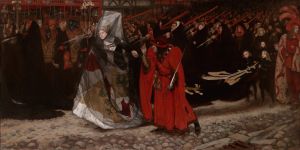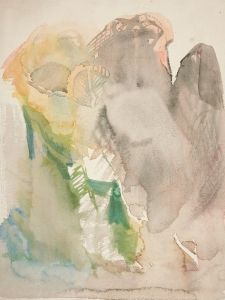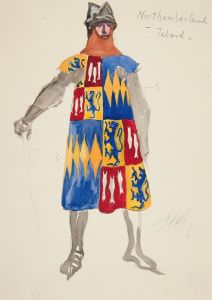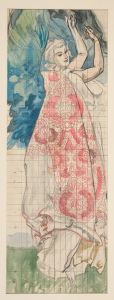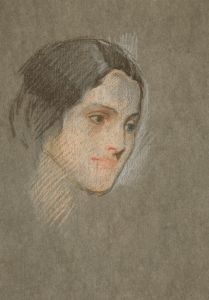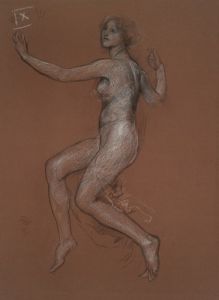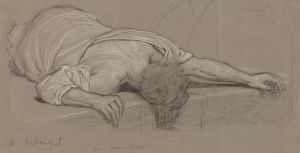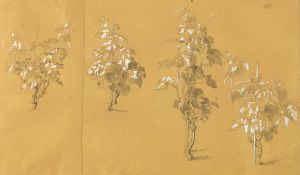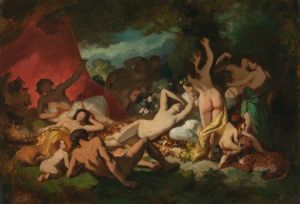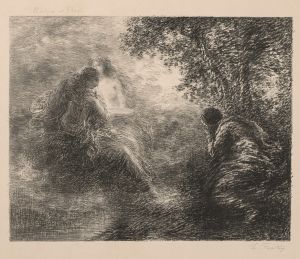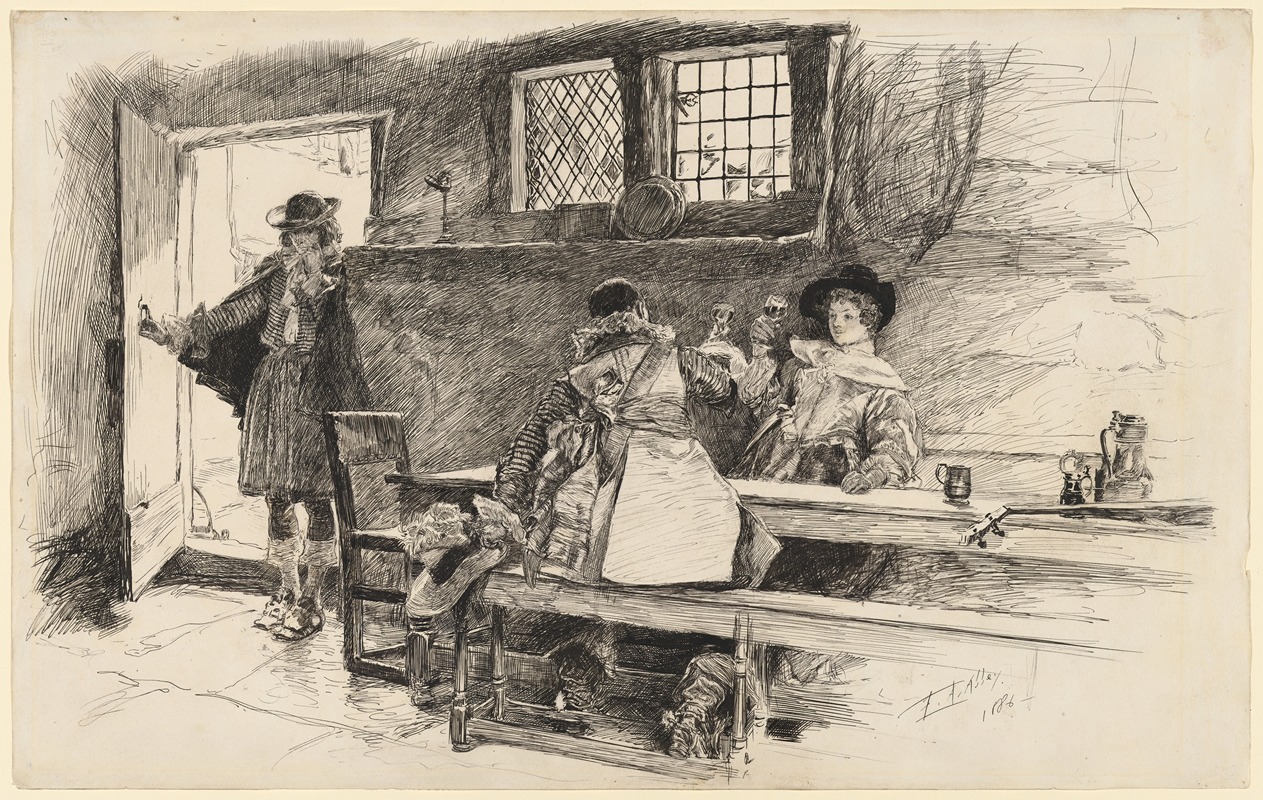
‘Will had her to the wine,’ illustration to ‘Phillada Flouts Me’
A hand-painted replica of Edwin Austin Abbey’s masterpiece ‘Will had her to the wine,’ illustration to ‘Phillada Flouts Me’, meticulously crafted by professional artists to capture the true essence of the original. Each piece is created with museum-quality canvas and rare mineral pigments, carefully painted by experienced artists with delicate brushstrokes and rich, layered colors to perfectly recreate the texture of the original artwork. Unlike machine-printed reproductions, this hand-painted version brings the painting to life, infused with the artist’s emotions and skill in every stroke. Whether for personal collection or home decoration, it instantly elevates the artistic atmosphere of any space.
Edwin Austin Abbey was an American artist known for his illustrations and paintings, particularly those depicting scenes from literature and history. One of his notable works is the illustration titled "Will had her to the wine," which is part of a series of illustrations for the poem "Phillada Flouts Me." This poem is a traditional English folk song that tells the story of unrequited love and the playful rejection by the titular Phillada.
Abbey was born on April 1, 1852, in Philadelphia, Pennsylvania. He began his career as an illustrator for Harper's Weekly and quickly gained recognition for his detailed and expressive work. Abbey's illustrations often captured the essence of the literary works they accompanied, bringing characters and scenes to life with his keen eye for detail and composition.
The illustration "Will had her to the wine" is a testament to Abbey's skill in capturing the mood and narrative of the poem. While specific details about the creation of this particular illustration are limited, it is known that Abbey's work on "Phillada Flouts Me" was part of a broader trend during the late 19th century where artists and illustrators sought to bring classic literature and folk tales to a wider audience through visual art.
Abbey's style is characterized by its meticulous attention to historical accuracy and its ability to convey the emotional undertones of the scenes he depicted. His illustrations often featured rich textures and a strong sense of movement, drawing viewers into the story and allowing them to experience the emotions of the characters.
Throughout his career, Abbey was influenced by the Pre-Raphaelite Brotherhood, a group of English painters, poets, and critics founded in 1848. The Pre-Raphaelites emphasized a return to the detail, color, and complex compositions of Quattrocento Italian art. Abbey's work reflects these influences, particularly in his use of color and his focus on narrative detail.
In addition to his work as an illustrator, Abbey was also a successful painter. He moved to England in 1878, where he continued to work on illustrations and also began to focus more on painting. Abbey's paintings often depicted scenes from Shakespearean plays and other historical or literary subjects, further showcasing his interest in storytelling through art.
Abbey's contributions to the world of illustration and painting were significant, and his works continue to be appreciated for their artistic merit and historical value. His ability to blend narrative and visual art set a standard for illustrators of his time and influenced future generations of artists.
"Will had her to the wine" remains an example of Abbey's talent in capturing the spirit of a literary work through illustration, demonstrating his unique ability to translate words into compelling visual narratives. Abbey passed away on August 1, 1911, but his legacy lives on through his extensive body of work, which continues to be studied and admired by art enthusiasts and scholars alike.





